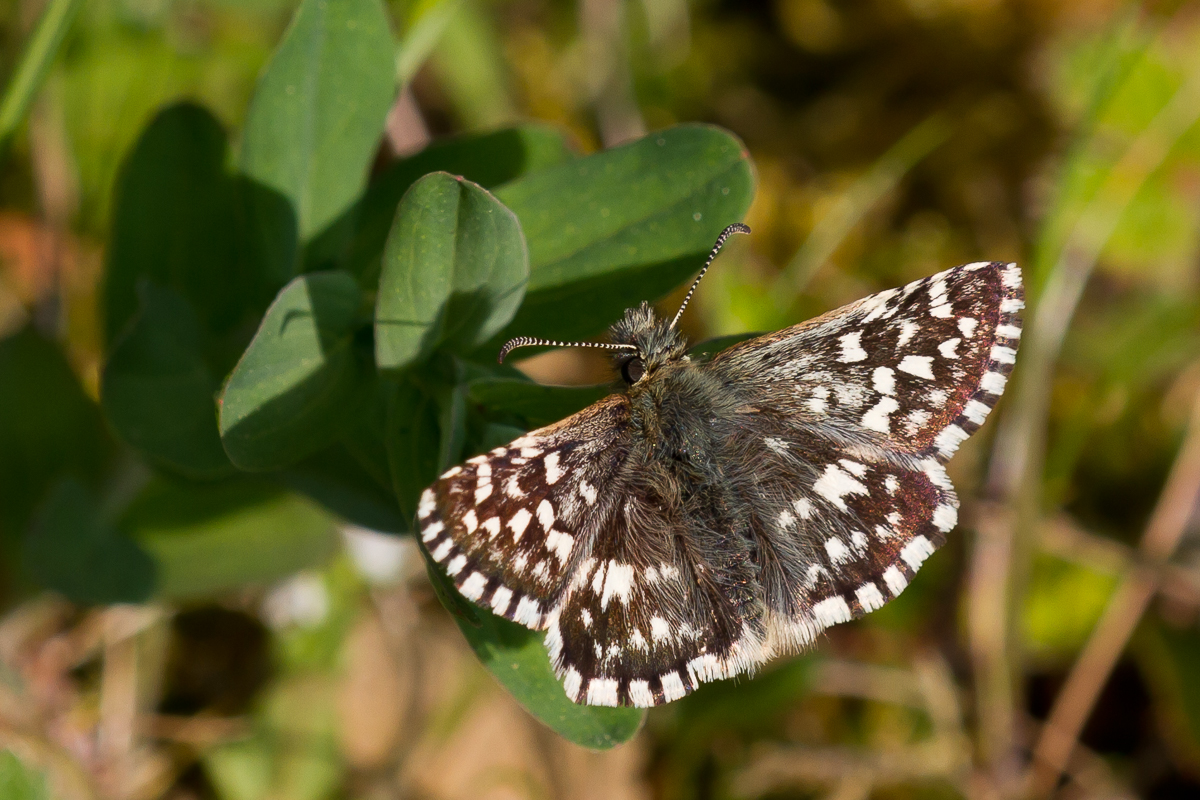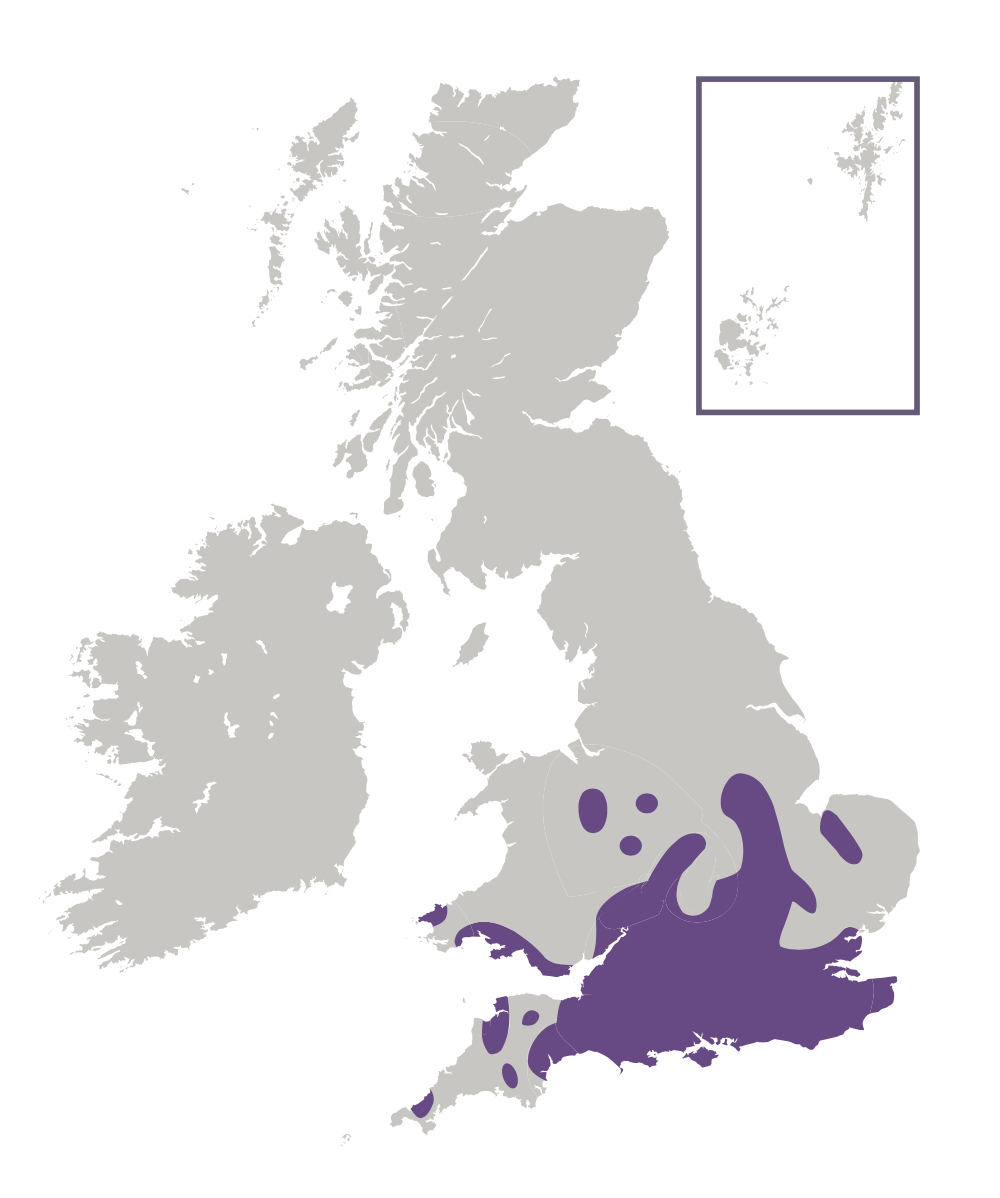
Photo © Peter Eeles
Like most skippers, the Grizzled Skipper is extremely difficult to follow when in flight, but will stop to feed from various nectar sources. Once settled, the black and white pattern on the wings, from which this species gets its name, is unmistakable. The butterfly occurs in small colonies of less than 100 adults. A well-known aberration of this species, ab. taras, has all of the white spots on the forewings joined, forming a large white blotch. This butterfly is found in England south of a line extended from West Gloucestershire in the west to North Lincolnshire in the east, with strongholds in central and southern England. There are scattered colonies further north and in Wales. This species is absent from Scotland, Ireland, the Isle of Man and the Channel Islands.
This is a warmth-loving butterfly, and both sexes bask in the sun for long periods, typically on a stone, leaf or bare earth. This is an active butterfly which will fly at most times the day, and even into the evening, if conditions are warm enough. The butterfly uses several nectar sources, favourites being Bird's-foot Trefoil and Buttercup. The male is somewhat territorial and will chase any butterfly, irrespective of size, from its area. Females entering the territory are courted for a short period and, if the female is receptive, pairing occurs. The butterfly can be found roosting on heads of flowers and grasses during cool weather and at night.

This species occurs in different habitats that are all characterised by warmth, shelter, and sparse vegetation, such as chalk downland, woodland edges, woodland clearings, large woodland rides, unimproved grassland, hillsides, valleys and occasionally heathland.
Adults feed primarily on Bugle (Ajuga reptans), buttercups (Ranunculus spp.), Common Bird's-foot-trefoil (Lotus corniculatus), Daisy (Bellis perennis), dandelions (Taraxacum spp.), Ground-ivy (Glechoma hederacea), Ragged-Robin (Silene flos-cuculi), Wild Strawberry (Fragaria vesca) and Wild Thyme (Thymus drucei).
The primary larval foodplants are Agrimony (Agrimonia eupatoria), Creeping Cinquefoil (Potentilla reptans) and Wild Strawberry (Fragaria vesca). Barren Strawberry (Potentilla sterilis), brambles (Rubus spp.), Dog-rose (Rosa canina), Raspberry (Rubus idaeus), Salad Burnet (Poterium sanguisorba ssp. sanguisorba), Silverweed (Potentilla anserina), Tormentil (Potentilla erecta) and Wood Avens (Geum urbanum) are also used.
